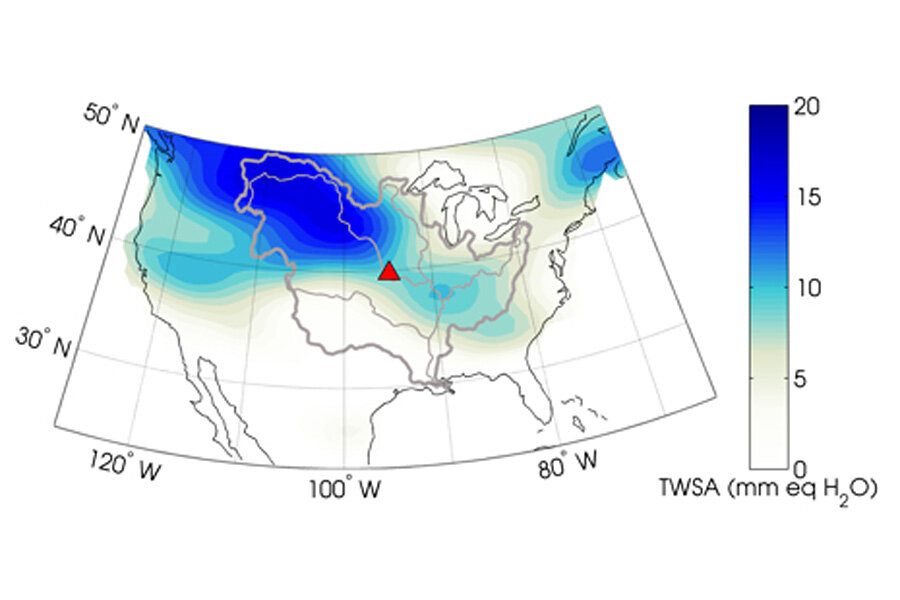Can we predict floods from space?
Researchers have figured out a new way to predict which rivers are most at risk of dangerous flooding.
To do so, they measured how much water was stored in a river basin months ahead of the spring flood season.
"Just like a bucket can only hold so much water, the same concept applies to river basins," said lead study author J.T. Reager, an earth scientist at the University of California, Irvine. When the ground is saturated, or filled to its brim, conditions are ripe for flooding. [Top 10 Deadliest Natural Disasters in History]
Reager and his colleagues looked back in time using satellite data, and measured how much water was soaking the ground before the 2011 Missouri River floods. The researchers found their statistical model strongly predicted this major flood event five months in advance. With less reliability, the prediction could be extended to 11 months in advance, the researchers said.
"This gives the background on what's on the ground before the rain even gets there," Reager said.
The findings were published today (July 6) in the journal Nature Geoscience.
The 2011 Missouri River floods lasted for months, closing interstates, shutting down nuclear plants and scouring farmland. The National Weather Service issued flood alerts in April, a month before flooding began.
Reager hopes his new method will eventually help forecasters prepare reliable flood warnings several months earlier. "It would be amazing if this could have a positive effect and potentially save lives," he said.
The researchers relied on NASA's twin GRACE satellites to diagnose a region's flood potential. As the satellites circle the Earth, changes in gravity slightly perturb their orbit. These tugs are proportional to changes in mass, such as a buildup of water and snow. (GRACE was originally designed to track melting in the ice sheets.)
The team used GRACE to look at all potential water sources, including snow, surface water, soil moisture and groundwater. "This gives us a more accurate interpretation of what's happening on the ground," Reager said.
So far, the method has only been tested when the team looked back at past floods. And it only works with certain types of floods — it can't help predict flash floods caused by sudden rains, such as India's monsoonal flooding, Reager said. "GRACE can only see this slow saturation flooding," he said.
There's also a three-month lag before the researchers can obtain data from the GRACE satellites, which means potential flood predictions using this method are limited to only two or three months in advance, Reager said. That's about the same amount of advance warning that on-the-ground measurements currently provide. NASA is, however, working on ways to speed up its data delivery to 15 days, he said.
Email Becky Oskin or follow her @beckyoskin. Follow us @livescience, Facebook & Google+. Original article on Live Science.
- Mightiest Floods of the Mississippi River
- In Images: Extreme Weather Around the World
- Earth from Above: 101 Stunning Images from Orbit
Copyright 2014 LiveScience, a TechMediaNetwork company. All rights reserved. This material may not be published, broadcast, rewritten or redistributed.






